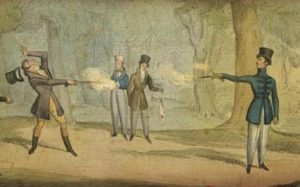Week 9 Reading Analysis
Mona Gleason’s article “Disciplining Children, Disciplining Parents”[1] and Tamara Myers and Mary Ann Poutanen’s “Cadets, Curfews, and Compulsory Schooling”[2] both speak of Canadian families after WWII and examine the affluent treatment and increased freedom given to youth by parents.[3] In postwar Canada “between 1946 and 1963, teenagers enjoyed their family’s prosperity and security, and developed their own unique subculture with music and movies as their voice,” they were becoming powerful and the government had to implement mandatory measures to ensure harmony. Both articles acknowledge this post war change of society, and how this enforced parental involvement to raise responsible children.
Myers and Poutanen’s article is thorough and understandable, but lacks references. They make arguments such as “…In their role in supervising and disciplining students, schools… created programs to identify and address pre-delinquency. As part of the campaign to prevent delinquency, schools mobilized children and youth. We argue that this in turn fostered an exaggerated effort to create good children and patriotic citizens,”[4] but lack references which makes their evidence unreliable. The motives of compulsory education and curfew are unclear as they state they are implemented to “prevent children from growing up to quick”[5] and “protect childhood and reinforce the family,”[6] but later propose they are instilled to “control young people”[7] and submit youth to values that favoured patriotism and loyalty which would regulate, guide and socialize children. [8] Having an education system that would guide children to conform is not a new concept, but the governments ulterior motive to their advertisement of the newly implemented practises shows the desperation for control as “teenagers formed their own identity and became an influential subculture.”[9]
In Gleason’s article it is clear the introduction of psychology and psychiatry after WWII
progressed the notion of a ‘healthy’ child and in turn put more pressure on parents to raise a ‘healthy’ minded and behaved child. Societies quick grasp on new psychological ideas gave no time for parents to adhere to the new norms and their dependence on medical expertise shows the emergence of a gullible society, “after the war the power of the perception of social disruption, regardless of proof to the contrary… [influenced] and [shaped] public opinion.”[10]
There is a shift from the mother being all-knowing to her being the problem parent, and father emerging as the correcting influence.[11] This recognition of gender roles showed the progression of the father to be the “new man”[12] rather than the bread winner, and presents a “virulent attack on [the] parenting skills of mothers.”[13] Gleason displays the overwhelming amount of change parents were expected to adopt in a simple to understand format. Her focus on parent’s hardships allow the reader to gain a perspective not often given and understand the development of our modern parenting regimen, as we typically give our children more freedom that restrictions, this was influenced by the youth rebellion.
Progression did not always mean for the better of all society. In the case of youth rebellion, the importance of child well-being is identified as more important than the parental well-being because youth were the the hope for the future. Therefore, when they began to rebel measures were taken to try and ensure they conform. Parents took the blame for much of their rebellion, when realistically they were doing it on their own because of the economic boom after WWII.[14] Parents were responsible for what their children became in life and it was believed this was fully reliant on their upbringing. This notion is similar to society today, we are quick to judge parenting regimens and often forget the complex minds of children and their stubbornness. Parents can only serve as a guide for their children towards their full potential and this concept is not quite recognized by either authors, which makes it believable that this concept was not yet established following WWII.
References
[1] Gleason, Mona. “Disciplining Children, Disciplining Parents: The Nature and Meaning of Advice to Canadian Parents, 1945-1955,” in Sara Burke and Patrice Milewski (Eds.), Schooling in Transition: Readings in the Canadian History of Education, Toronto: University of Toronto Press, 2012: 357-375.
[2] Myers, Tamara and Mary Anne Poutanen. “Cadets, Curfews, and Compulsory Schooling: Mobilizing Anglophone Children in WWII Montreal.” Histoire Sociale 38, no.76 (2005): 367-398.
[3] “The Canadian Teenager.” https://canadianprosperityandsecurity1.wordpress.com/the-canadian-family/the-canadian-teenager/
[4] Ibid. 369.
[5] Ibid. 378.
[6] Ibid. 379.
[7] Myers, Tamara and Mary Anne Poutanen. “Cadets, Curfews, and Compulsory Schooling: Mobilizing Anglophone Children in WWII Montreal.” (2005): 369.
[8] Ibid. 383,386,387.
[9] “The Canadian Teenager.” https://canadianprosperityandsecurity1.wordpress.com/the-canadian-family/the-canadian-teenager/
[10] Gleason, “Disciplining Children, Disciplining Parents: The Nature and Meaning of Advice to Canadian Parents, 1945-1955,” 360.
[11] Ibid. 365.
[12] Ibid. 365.
[13] Ibid. 364.
[14] “The Canadian Teenager.” https://canadianprosperityandsecurity1.wordpress.com/the-canadian-family/the-canadian-teenager/






